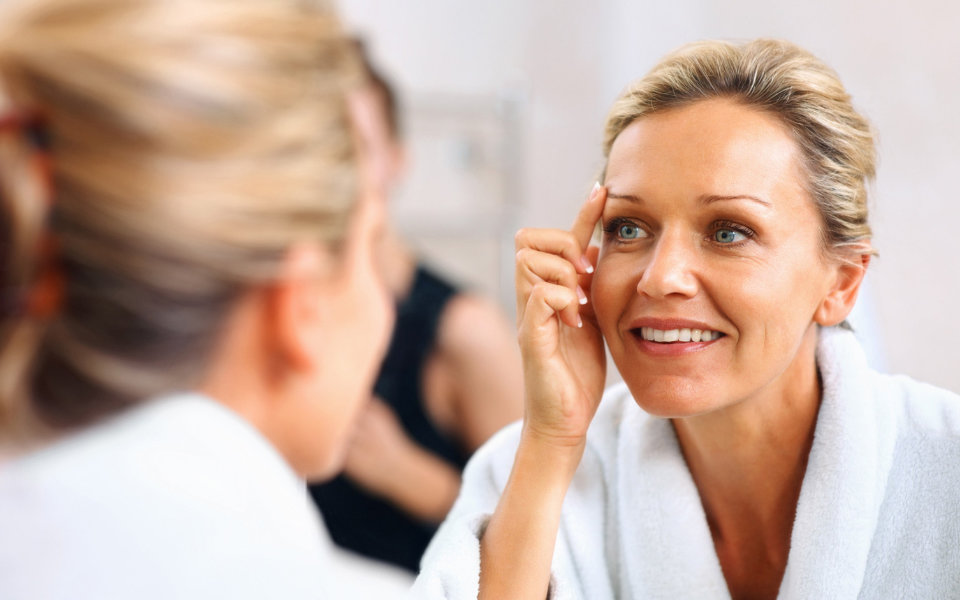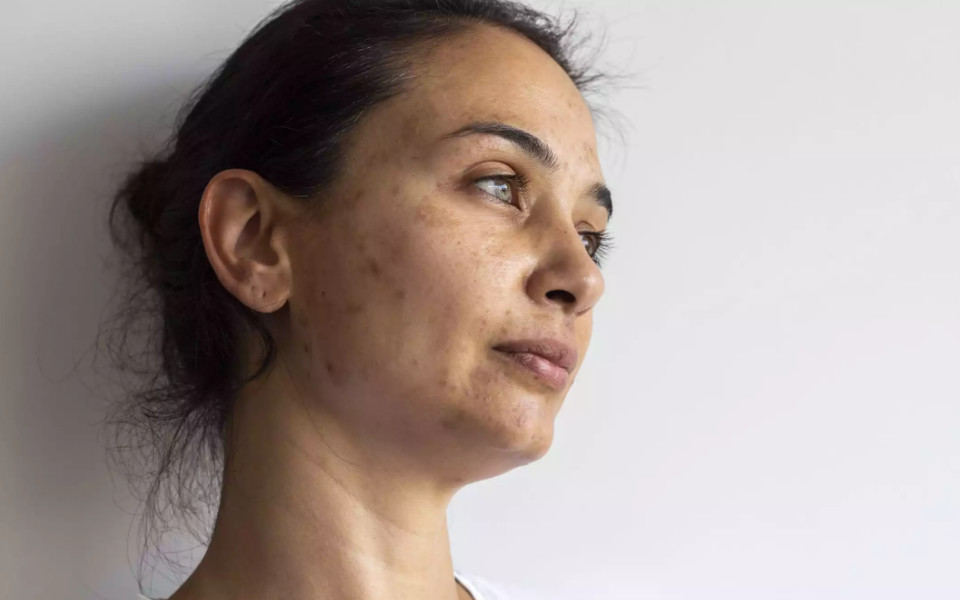
SUBSCRIBE TO OUR NEWSLETTER
Subscribe to our newsletter to stay informed about articles, events, and updates from Wellness Impact.

Subscribe to our newsletter to stay informed about articles, events, and updates from Wellness Impact.

Skin health is an important part of holistic health care. And aligns with our vision of having a healthy mind, body, and soul. Implement a healthy skincare routine and a well-balanced, healthy diet to maintain healthy skin.
Today, we explain how to improve skin health by using healthy beauty products and eating the right foods. Maintaining excellent gut health for skincare is another aspect many of us don’t think about. So we will also highlight why gut health is an essential component of healthy skin.
Guidelines for skin health include:
We’ll discuss the structure and layers of the skin and their functions. Also, the types of skin damage one may be prone to, due to certain circumstances:
Our skin is the largest organ of the body. It is the external equivalent to our internal skeletal system, in that it holds all our organs, fluids, muscles, tissues, and bones together. But our skin has a far greater function than being a mere flesh sack for our innards!
Millions of pores allow for the absorption and secretion of all fluids and substances.
We can treat certain skin conditions topically. We can enrich and moisturise our skin from the outside. As important, we must nourish and rejuvenate our skin from the inside. Do this by making healthy food choices and getting active.
Part of a healthy body is healthy skin. The skin is an outer indication of the inner state of our bodies. Our skin can stretch and shrink. Over time it becomes saggy and wrinkled, and it also bears the scars and marks that tell the stories of our lives.

We have to explain the different layers of skin so that you can understand how beauty products, supplements, and make-up affects your skin. From birth until old age.
Some ingredients are easily absorbed through the skin. Others act as barriers to protect the skin. Some offer nourishment, others hydration, and of course, cleansing and toning. But we must always stay informed about the efficacy of products.
For example, will collagen applied topically be effective? Or is it better to use products or eat food that gets the body to produce its own collagen?
There are three main layers of skin. Each one gets made up of different shaped cells and has different roles to play. The three main layers are the epidermis, the dermis, and the hypodermis.
The epidermis is the top layer of skin and consists of a further five layers that produce and house several different cells. These cells all have specific functions and shapes.[1] The layers of the epidermis are:
And the cells found in these layers are:
Likewise, people from cold climates, with less sun, produce less melanin. So fair-skinned people must take extra precautions when they spend time outdoors. Sunburn can be mild and itchy to severe and blistering.
During childhood, exposure to the sun, without adequate protection, often leads to skin cancer in later years. But if they get given tablets high in vitamin A and calcium carbonate the skin is protected from UV rays, from the inside.
Applying sunscreen is controversial. Some people strip their skin of protective oils that protect them from UV damage. Reapply sunscreen after every swim. Be cautious when choosing sunscreens. Some sunscreens applied incorrectly can cause skin cancer. [3]
Lymph nodes don’t automatically spring into action. Jump on a trampoline daily. Give yourself massages. And increase your daily movement. You w assist your lymph nodes in their job through action.
The dermis is where you find sweat glands, hair follicles, collagen and elastin. It gets made up of connective tissue. This forms a layer of protection and support for the epidermal top layer. It is only made up of two layers but these two layers are thicker than the five layers of the epidermis. The dermis protects the body from getting hurt when the top layer gets ruptured. It also aids in healing and provides nourishment to the epidermis.
Collagen is about 70% of the dermis. The rest is the connective tissue that gives skin its elastin (suppleness and stretch). The papillary layer contains fibroblast cells. These help collagen to keep forming and also house the capillaries. Both epidermis and dermis lose their stretch with age and exposure to the elements. This can slow down by how we look after our skin from both the inside and the outside.
The dermis has nerve endings in it. This is why we feel pain, itchiness, and other sensory experiences. The blood vessels in the dermis also play an important part in heat regulation and wound healing. The lymph glands are between this layer and the hypodermis. They help remove toxins through the skin, via sweat glands.
The hypodermis is mainly fat and provides the most support to the skin. It also holds many blood vessels and nerves that act as insulation for the body.
Caring for the skin means taking care of all three layers. The top layer is easy to look after. Follow a consistent cleaning routine and use natural, good quality products to maintain skin health
But did you know that your skin can also get damaged from the inside and scars form as they do on the outside? Fix this by taking in extra vitamins E, C, D and A.
You can take these in the form of supplements, by eating the right foods or applying certain topical products.

Be aware that many products available are bad for your skin in the long run. They claim to moisturise and prevent ageing. But often have the opposite effect. This causes the body to lose its ability to supply the skin with natural oils. Skin gets dry and thin. And this dryness makes skin weak, prone to bruising, and slow to heal from cuts and abrasions. Also, many products are completely useless and don’t nourish or protect the skin at all.
Cheap skin care products are often inferior. They contain additives, fillers, synthetic substitutes, and harmful chemicals. But natural products can be as bad for you if they are of poor quality or manufactured without adding antibacterial ingredients. Many products get priced fairly but may contain a mixture of synthetic and natural ingredients. So take the extra time to find a brand that does what it claims to do.
It’s also easy to make skincare treatments by using affordable natural ingredients. You probably have many of these in your pantry already!
Things like avocado, coconut oil, eggs, cucumber, lemons, oats etc. can all get used to nourish, cleanse and tone skin.
Our mission today is to give you accurate, simple, and effective advice on how to keep your skin:
The best time to get into skincare should be from birth! Today, new mums are enthusiastic about using natural, gentle, and organic products. It seems we have come full circle. And today, the synthetic, chemical products that got applied to babies to soothe nappy rash, treat mosquito bites, moisturise dry skin and chapped lips, or even to protect the skin from sun exposure, have got some serious competition from the natural beauty industry.
Busy, working mums get to buy natural, organic products. And stay-at-home mums, with time, can whip up almost everything the skin needs. Start a herb garden. Shop at the local farmers market, and keep a few, cheap basic ingredients on hand.
A solid skin health care routine should include regular cleansing, toning, and moisturising. If you wear make-up your regime will differ slightly. This is because you will need to first remove the make-up before you can start cleansing.
For hardcore naturalists, you may choose to wake up splash your face with cold or hot water and that’s you, ready to go! If your skincare routine is this simple, you may find it beneficial to give yourself a nice steam-bath facial now and then. Afterwards, use a deep cleansing mask or face pack of some type. You can mix it up, depending on how your skin is looking at the time.
Different facial masks include:
In all these categories you’ll find products suited to your skin type.
Tips for skin health can get determined by answering the following questions:
Answer these questions before you start looking for
Don’t forget, the rest of the body is covered in skin too! Even heels and hands need tender loving care. If you live by the beach you’ll have to invest in quality sunscreens. Bear in mind the face, scalp, back of hands, and even ears, need protection. Reapply after every swim or shower.
People in dry, harsh climates must moisturise their whole bodies, even if they are covered up due to cold weather. And don’t forget to hydrate from the inside.
Drink enough fluids to keep your skin from drying out. Dry skin looks wrinkled, thin, and chapped. It’s not only water that counts as liquids. Coffee, tea, thin broth-type soups, juices, and smoothies all count towards your daily liquid intake.
Rehydrate, don’t dehydrate!
Dehydration is a serious condition that can lead to death. It’s crazy to think that people still die from something as treatable and avoidable as dehydration!
There are differences between skin cleaning routines, based on different skin types. There are five different types. Further down, you’ll get appropriate tips for skin health as we age.
Certain skin disorders get treated depending on age, nutrient intake, and the amount of melanin you have. We go into detail further down.
Skincare routines always follow the same pattern, regardless of type.
Women, and nowadays some men too, like to wear makeup. Either to cover up blemished, pock-marked skin or to create a look they want for that day, or a specific event. Applying make-up, and all that goes with it is another topic on its own.
Wearing make-up is so entrenched in the psyche of most women. And today, it is a booming multi-billion pound industry. But it’s not ideal for the skin, as it blocks pores on the face. Strain gets placed on expelling toxins and keeping skin clean and blemish-free.
Members Only: In another article, exclusive to members, we give in-depth info on natural beauty products. It’s full of detailed, accurate information on healthy, organic skincare products. It lists the ingredients and what they do. And explains why to avoid certain ingredients. It also gives substitutes for outdated products and techniques. Well worth the read!
Everyone that shops @ TheGivingNature.com gets free shipping for orders over £35.Joining The Giving Nature online community also gives you access to unique, educational, inspirational, exclusive, multimedia digital content.
People with dry skin often suffer from premature ageing, flare-ups, eczema, and chapped, cracked lips. But dry skin is often caused by external factors, so it’s easy to treat. A correct diet helps to reduce skin problems common to dry skin.
Use a non-oily moisturiser for your body. Non-oily is always better. Who wants the greasy feeling of a product rubbing on their clothes or getting messy if you work out? Non-oily moisturisers are more absorbent than oily ones and leave skin feeling silky. And smooth to the touch.
When you cleanse, tone and moisturise, choose products that get recommended for dry skin.
Avoid using hot water. It strips the body’s natural oils.
Use gentle products for cleansing, the fewer ingredients and fragrances, the better.
When you dry off, apply moisturiser before the skin is completely dry. This increases absorption. Pat dry with a towel and then apply moisturiser. Apply within three minutes of washing to lock in the moisture.
With dry skin, you can skip the toning, unless you wear make-up. To remove make-up, cleanse with a milky, moisturising cleanser, with ingredients that replenish moisture. If you tone, use a toner for dry skin.
Oily skin reacts well to gel cleansers and exfoliating cleansers and scrubs. Oily skin is prone to acne and scarring. Because oily skin produces an excess of sebum, it often appears shiny with large pores. Sebum comes from the sebaceous glands. It’s found in the dermis, which is the next layer after the epidermis.
Stress, hormones, and genetics may be reasons for excessive sebum production. Stress is a big factor in messing with hormones. Stress hormones are the first line of defence in the hormone chain. So when we get stressed, energy gets sent to the stress hormones first. The different hormones, needed by the body for other functions, then operate out of balance. This leads to a long list of mild symptoms. We usually ignore them until more serious ailments become apparent.
So, the common signs of clogged pores and acne get reduced by daily cleaning. And regular extras, like face masks, facial saunas, and drinking more water. Getting fresh air, and small doses of sunshine, also do wonders for oily skin.
People with normal skin need the least amount of attention to maintain good skin health. Normal skin is an indication that one’s diet is good and the body is working well.
When it comes to tips for skin health of normal skin, it’s simple. On rising and before applying make-up all you need to do is use a natural cleanser for normal skin.
It can be exfoliating, a gel, a wash, or a gentle cleansing bar of soap for normal skin. Follow this up with a light toner and then if you go make-up free, apply your daily moisturiser of choice.
In harsh winters, choose moisturisers with extra oil-based ingredients. Find products with shea butter or coconut milk. They work wonders if you are hitting your forties.
In hot sunny summers, it’s always prudent to use a pre-make-up moisturiser with an SPF of 15 or 50. Any product with an SPF of over 50 is not necessary. SPF 50 sunscreens block out 98% of UV rays. Anything higher will be more expensive, yet less effective when applied. [4]
Combination skin has an oily T-shaped panel across the forehead and down to the chin. The cheeks are dry. There are special products for combination skin. But you can also use a toner for the oily parts and leave out using toner on cheeks unless you are removing make-up.
Sensitive skin is the skin type that gives the most problems. It can react with many ingredients in products and is also affected by the sun more than other skin types. Sensitive skin is often fair and can flare up with red patches or become dry and itchy. Again, you will find the right type of products for sensitive skin. Often, natural beauty products are best, as they contain fewer synthetic ingredients. And feed the skin with natural ingredients and vitamins, like vitamin A.
As mentioned above, melanin is the result of molecules that reside in the basal layers of the epidermis. There are three forms of melanin in humans and each has a specific function. Two are in cells called melanocytes. From here they attach to cells called keratinocytes. Melanin is a photoprotective pigment. It protects the skin, hair and eyes against UV rays.
The amount and type of melanin is genetic. But melanin can also get affected by:
and skin pigment disorders, like albinism.
Albinism is an inherited condition. The body produces no melanin, leaving people, and animals, with white hair and skin. Albino people are prone to eye problems and cancer. Because they lack the protection melanin affords.
Certain people have red hair and freckles, based on the amount and type of melanin their bodies produce. Dark-skinned people can tolerate the sun far better than fair-skinned people. And the less melanin you have the more you need sunscreen. Alternatively, stay out of the sun by using an umbrella when walking, or lying on the beach. Wear a hat when gardening or if you don’t want to carry a “sunbrella” with you.

Many health-conscious people know that gut health is essential to staying healthy and getting optimal function from the different systems in the body. From the immune system to the neurological system to the endocrine system, a healthy gut is where wellness starts.
Many fads come and go, and through the decades, different styles of diet have become popular. At one stage, Dr Atkins’ Diet was fashionable. It went out of fashion but reappeared two or three decades later rebranded as “Banting”.
Whether you eat:
Today the focus has shifted. Functional Medicine is getting a good name. Functional Medicine means:
Eating a mainly plant-based diet,
Eating based on the colours of the rainbow
And getting sufficient protein, carbohydrates, and healthy fats,
It encourages a healthy and effective way of approaching food. And focuses on getting the microflora in the gut back to healthy colonies of good bacterial strains.
It focuses on restoring health through diet and probiotics instead of allopathic medicine
People are being taught to think of the gut as the brain of the body, sending signals to the brain and not vice versa. It is like Naturopathy, which also had its heyday many decades ago. These diets were all aimed at reversing the effects of processed and fast foods. Today, lifestyle diseases like diabetes, heart disease, and obesity, all affect the skin. So the saying “you are what you eat” gets reflected by the health of your skin.
Disclaimer: Always consult your health practitioner before taking yourself off any medication. Get the opinion of your doctor before embarking on a radical change in your diet. Slowly does it. Fasting can be dangerous at times if undertaken without professional supervision.
It all starts with good bacteria in your gut. And having enough of it to keep the “bad” bacteria and fungal growth (like candida) at bay. Things that cause good bacteria to get killed are:
antibiotics, eating processed food, contraceptive pills, and not getting enough movement, fresh air, and sunshine.
Probiotics are strains of good bacteria that appear naturally in fermented foods; like tempeh, kombucha, kefir, and yoghurt. But prebiotics plays an important role too. Prebiotics feed the probiotics.
Basically, foods high in fibre will be prebiotic. When you eat prebiotic and probiotic foods or take probiotic capsules, the gut soon rectifies itself. And becomes balanced.
When the good bacteria is doing its job the body absorbs nutrients much better. And thus the immune system gets boosted. A domino effect occurs until all systems are on go! And a healthy gut is evident when a person has glowing, healthy skin and is full of zest and vitality.
Eat whole foods. Stay away from food that comes with an ingredients list. Stay away from processed food and junk food. Eating something in the morning is a good habit. Ideally, it should be a meal that is high in fibre, low in sugar, and either carbohydrate or protein-based.
As we age our diets should change slightly too. Below we get into more detail about tips for skin health as we age from our teens to over sixty.
Yes, probiotics are essential to keep our bodies and our largest organ, the skin, in tip-top shape. There are several main species of good bacteria. And from these come many strains.[5] The three main species are:
These strains can get bought online as supplements. You can also get them from health shops.
So why are these probiotics good for your skin? With enough good bacteria, your skin gets protected from:
infections, cuts, insect bites, and abrasions.
If your immunity is low and your gut is out of sync, a small wound can turn into a serious infection. This gets caused by a bacteria called Staphylococcus aureus. When your digestive system works toxins get expelled efficiently. And nutrients get sent, via the blood and hormones, to where they must go.
More tips for skin health include eating foods high in antioxidants. Antioxidants neutralise free radicals that lead to premature ageing and even cancer! Foods and vitamins high in antioxidants include:
Get enough fibre into your daily food intake. A good amount of fibre is around 25g – 30g. Most people don’t enough fibre. This leads to all sorts of ailments like fatigue, constipation, and obesity. So part of eating for your skin is to get enough fibre.
There are different types of fibre. The one type is inulin and is in prebiotic foods. It is soluble and thus available as food for microflora in the gut.
The other type is cellulose. It’s found in most greens and veg as dietary fibre. It is insoluble and known as roughage. Its job is to make us feel satiated. Roughage moves through the small and large intestines, acting as a vacuum cleaner or broom, removing unwanted toxins from the lining and walls of the colon.
Foods high in fibre include:
Prebiotic foods are foods with natural fibres and sugars. The sugars are FOS (fructooligosaccharides) and the fibres are mainly inulin. They are found in supplement forms too. Digestive enzymes also come as supplements. They aid the digestive system with digesting food and transporting what we eat to the right places.
Find almonds, barley greens, and other high-fibre, nutrient-dense foods that can conveniently be added to smoothies. The skin will benefit and so will your insides. Shop @ The Giving Nature for these products and more. Get them delivered to your door. (Orders over £35 get free delivery).

Get Active!
Movement, whether it’s in the form of workouts or taking the stairs and not the lift, will improve your cardio fitness. You get many health benefits from increasing your daily movement. Sedentary lifestyles impact skin health as much as it does heart and immunity
Google or go to YouTube to find specific exercises for your face. Yes! Stretching and toning facial muscles help prevent premature ageing. The lymph nodes need to get stimulated to help with excreting toxins through the skin. Try trampolining or treat yourself to weekly massages. You can also dry rub your thighs and arms after a shower to stimulate the lymphatic system.
As we age, our bodies want foods to supply us with the correct amount of vitamins, minerals, fats, carbs, and antioxidants.
Here is a short breakdown of which foods you should get into your diet as a regular ingredient, as you get older.
Teens have the joy of puberty to deal with and some teens go through extreme hormonal challenges. Are you one of those teens who get breakouts before your period? If you get acne, not only is it embarrassing, but it’s also a constant irritation and often itchiness comes with acne outbreaks.
There is nothing you can do to stop puberty. But adopting clean eating at this stage in your life will set you up for an easier and healthier lifestyle as you age. Many skin issues get avoided by eating clean, getting fresh air and exercising. Even keeping a journal, to write down your feelings may ease the agony of adolescence.
When you eat clean you basically cut out foods that can cause allergic reactions. And drink 8 glasses of water daily. This can be in the form of liquids with added electrolytes, especially if you play sports. Try to get in 3 portions of fruit, 3 portions of veg and a salad with greens and omega 3, 6 and 9 oils for optimal energy. Follow the acronym GBOMB. G for greens, B for beans, O for onions, M for mushrooms, and B for berries.
You don’t have to be extreme and not everyone wants to cut out meat completely. But if you eat meat, choose free-range, unprocessed and hormone-free meat. Plant-based meals and wheat and dairy-free choices are good. But as growing teens, don’t cut wheat and dairy out unless you have an allergic reaction to them. This is the time in your life when you develop eating habits that will follow you most of your life. So be moderate and stay on the middle path. Getting extreme about one’s diet can lead to mental health issues too.
Dr Patrick Holford has many books on his idea of how we should eat based on keeping blood sugar levels stable. Dr Will Cole advocates for eating the Functional Medicine way, which focuses on keeping a healthy gut and eradicating inflammation. Tim Norton brought back a modified version of the Ketogenic diet, where protein and fat features and carbs and sugar get cut out. And then there is eating plain, simple meals, free from additives and artificial ingredients, and high in fibre. Use your common sense and cut the stress about what you can and can’t eat based on all these diets.
Foods that should feature a lot in your daily diet are omega 3 fatty acids found in foods like:
Avoid black coffee. It interferes with the absorption of certain minerals, like iron and vitamin C.
Add avocado to your diet as much as possible. Drinking freshly squeezed orange juice is also good.
In your twenties, the first signs of ageing may appear in people who have spent much time outside, in the sun. Light from laptop and computer screens can also cause skin damage.
So, if you spend most of your day indoors but in front of a computer screen, be aware that it can cause skin damage. It is much like sun damage when you age.
In your twenties, your facial cleansing routine should be put in place, so that it becomes a habit for life. Especially if you want to preserve your skin, reduce fine lines, dullness, and premature ageing.
Cleanse, tone, and moisturise daily with natural products that feed your skin. You will still have to apply sunscreen if you are concerned about wrinkles. Not all people worry about the appearance of wrinkles as they age. Many people embrace natural living and embrace their bodies, lumps and all. It is important to have a good mental body image. The pressure on youth to look like their role models can often turn into self-esteem issues. So don’t get trapped in that false version of life and love yourself for who you are.
Many folks living in tropical climates don’t even wear sunscreen or use face products. If you splash some water on your face and use nothing else your natural oils protect you. Thus keeping the natural protective barrier on your skin. And face. Remember, if you have extreme season changes, as we have in the UK, you will need to use sunscreen in summer. Especially if you go to Cornwall or other beachside or outdoor places.
When you hit the thirties, your body will produce less collagen. Your face may start losing volume in the cheeks and appear dull. This is the time to introduce retinol serum (Vitamin A) to your skincare regime. Apply retinol serum to the areas where fine lines are appearing. Usually, it is around the eyes. And also around the mouth.
Increase or add nutritional yeast flakes to your diet. It is high in vitamin B. You can substitute with Marmite. To make your own marmite; mix nutritional yeast flakes with soya sauce.
Get 5 daily portions of veg. One cup salad equals one serving. Increase greens like broccoli, kale, and all other plants from that family. Smoothies help to get the five portions in every day. And if possible get 4 portions of fruit in too.
Chickpeas are particularly beneficial when you are in your thirties. If you take oral contraception you could get a vitamin B6 deficiency. Chickpeas are a rich source. Add to stews, curries, casseroles, salads, or sprout them.
Cleanse with appropriate cleanser, tone, apply serum, and then moisturise.
To apply serum: Place a small amount of serum on your index fingers and pat the area under and around your eyes. Never rub your skin dry or scrub too vigorously. This stretches the skin where it is thin. Pat dry and dab on. When you do cleanse use small circular motions.
For women, the forties mean the onset of pre-menopause. It’s time to exercise more or start to get active if you are not. Watch your portion sizes, and increase dark leafy greens into your diet. Add supplements, like spirulina and barley greens to smoothies. This helps towards getting your RDA (recommended daily allowance) of essential nutrients.
Eat foods high in phytoestrogens. These include black beans, lentils, chickpeas, and non-GMO soybeans.
By now you should be adding a good night cream to your regime. Make sure it is suitable for your age bracket and skin type. Use a good quality, retinol-based product for areas around the eyes, fine lines on the forehead and around your mouth.
In your 50s, you should be adding more fish and less meat to your diet. This reduces leptin production. Leptin is the hormone that signals the brain to tell you you’re satiated.
Avoid or stop drinking alcohol. Two foods to add to your diet are oats and beetroot.
When cleansing, and over 50, it is wise to add serums and oils to your daily facial routine. But never mix retinol-based products with topical vitamin C products. Choose one for the morning and one for the evening. Also, your night cream should be richer than your morning moisturiser. And contain ingredients that keep your skin hydrated but not greasy.
Remember to get your 8 glasses of liquid in every day.
A Note on Serums and Oils: They are not the same. A serum is not a moisturiser nor an oil. A serum is a concentrated form of treatment containing specific ingredients that have excellent penetrative qualities. They may contain hyaluronic acid for hydration, Vitamin C or other antioxidants for brightness, Vitamin A for smoothness, and peptides for tone.
A serum should get applied before moisturising and oil after, for a radiant shine.
Apply to damp skin for the best results. You only need 1-2 drops of serum for the en
Once you hit your 60s and over, add more nutritional yeast flakes and unsalted raw nuts to your daily diet.
The ability to taste may diminish with age. Nutritional yeast helps to bring out the taste in food and replaces salt. Eating these foods improve brain health and increase fibre
In your 60s your skin will be drier, thinner, and bruise easily. So, stay hydrated. And eat the nuts to improve gut health and get calcium into your system to strengthen your bones.
Avoid using normal soap. Change to a moisturising bar for both your body and face.

Why do I still experience skin disorders when I eat well and exercise regularly?
This is a good question. Despite your best attempts to care for yourself, environmental stressors wreak havoc on your skin. The use of mobile devices, and the need for cell phone towers, has increased our exposure to environmental pollution. We are living in a world that is battling to stay strong.
Technology, cars, and unscrupulous companies that sell toxic “beauty” products are all contributing stressors.
The list of skin disorders is long. We will focus on the most common and how to treat them. If your attempts to reduce your skin problems fail then it is wise to see a dermatologist.
The most common skin complaints are:
There are 9 common categories of skin diseases [6]
Let’s go through the list above and suggest possible mineral and vitamin imbalances. These are often caused by poor diet, not enough sleep and exercise. The mineral imbalances can be treated with tissue salts. But results take a few months to rectify the problems. For every tissue salt, there is a list of fruit and vegetables high in these minerals. So, if taking tissue salts doesn’t appeal to you, adding certain foods to your diet will be beneficial in reducing the symptoms of skin problems.
And, of course, there are also natural and medicinal products that can be applied topically to even out pigmentation, reduce blemishes and spots, and tighten large pores. Topical products also help with itchiness, rashes, and other uncomfortable and unsightly disorders, like eczema.
Veterans and fans of holistic health and wellbeing know that the most effective skincare vitamins are A, C, D, and E. In addition, there are trace elements and minerals found naturally in soil and whole foods, including fruit and veg. These play a vital and synergistic role in maintaining the balance between nutrients. They also keep our skin from ageing. And keep other skin ailments at bay.
These essential twelve trace elements are needed to synergise and activate the dance between amino acids, vitamins, minerals, and hormones. When we feed our bodies the correct dosages of all these nutrients, the body operates at optimal function. And our overall immunity and appearance of skin look good.
Thank you to the late Margaret Roberts, for her book on Tissue Salts, where the information below comes from.
Some conditions can be treated topically, some orally, and some get better from eating organic, healthy fruit and veg daily. Tissue salts can be found in tablet form and as liquid drops. You can also dissolve the tablets and use them as a wash. This method has to be repeated at least three times a day and in severe cases, every hour until inflammation and /or itching subsides.
Good for fissures around nails, chapped skin, lips, heels, and for eczemas that crack the skin and make it weep.
Foods and herbs rich in calcium fluoride are:
Treats teenage acne, pimples, blemishes, and gives the skin a radiant glow.
Foods and herbs rich in calcium phosphate are:
Good for any type of eruptions, like boils to fever blisters. Good for slow-healing wounds. Also used for eczema, rashes, and viral infections.
Foods and herbs rich in calcium sulphate are:
Good for all infectious childhood diseases like chickenpox, that cause rashes and itching. Also good for warts, purulent acne, vesicular eczema, and peeling skin.
This tissue salt helps build new cells and is important to the lining cells of the skin and mucous membranes throughout the body.
Foods rich in Kalium sulphate include:
Also known as sodium chloride (but not table salt), this tissue salt distributes water throughout the whole body, thus keeping osmosis balanced. Without the right amount of this tissue salt, many skin conditions may develop.
No.9 helps treat dry, scaly eczema, itching, weeping skin, psoriasis, and any ailments that cause watery discharge and blisters on the skin. Good for rashes and shingles.
Foods rich in Natrium muriaticum are:
The tissue salts that weren’t mentioned also have benefits for the skin but these are the main ones.
We, at Wellness Impact, hope you have found this article useful and full of interesting and accurate information. Whether your skin is:
The above information is a good place to get yourself on a journey to better skin health.
Remember to keep your skin clean, follow a regular cleansing routine, eat a balanced diet, and exercise as often as possible!